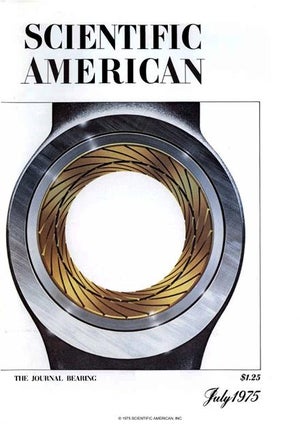The Accuracy of Strategic Missiles
The U.S. has initiated the development of ultra-accurate missiles capable of destroying the land-based missile force of the U.S.S.R. The technology behind the new "counterforce" strategy is reviewed

You are currently logged out. Please sign in to download the issue PDF.
The U.S. has initiated the development of ultra-accurate missiles capable of destroying the land-based missile force of the U.S.S.R. The technology behind the new "counterforce" strategy is reviewed
Techniques for cleaving DNA and splicing it into a carrier molecule make it possible to transfer genetic information from one organism to an unrelated one. There the DNA replicates and expresses itself
When positrons are injected into a crystalline substance, they are annihilated in encounters with electrons. The resulting gamma rays yield unique information on the atomic structure of the substance
In the oldest and still the commonest bearing a shaft (the journal) rotates in a sleeve (the bearing). Achieving low friction, long life and low cost in such bearings calls for sophisticated design
Sunlight tans skin, stimulates the formation of vitamin D and sets biological rhythms. Light is also used in the treatment of disease. Such effects now raise questions about the role of artificial light
It is the acoustic signal generated by a rapidly expanding channel of heated air. From the information in this signal it is possible to deduce the location, shape and orientation of a lightning flash
As the trunk and branches of a tree grow they get not only longer but also thicker. What law governs the relation between the two dimensions? The question is examined by hypothesis and experiment
They are not substances that a mosquito somehow finds distasteful. They jam the mosquito's sensors so that it is not able to follow the warm and moist air currents given off by a warm-blooded animal